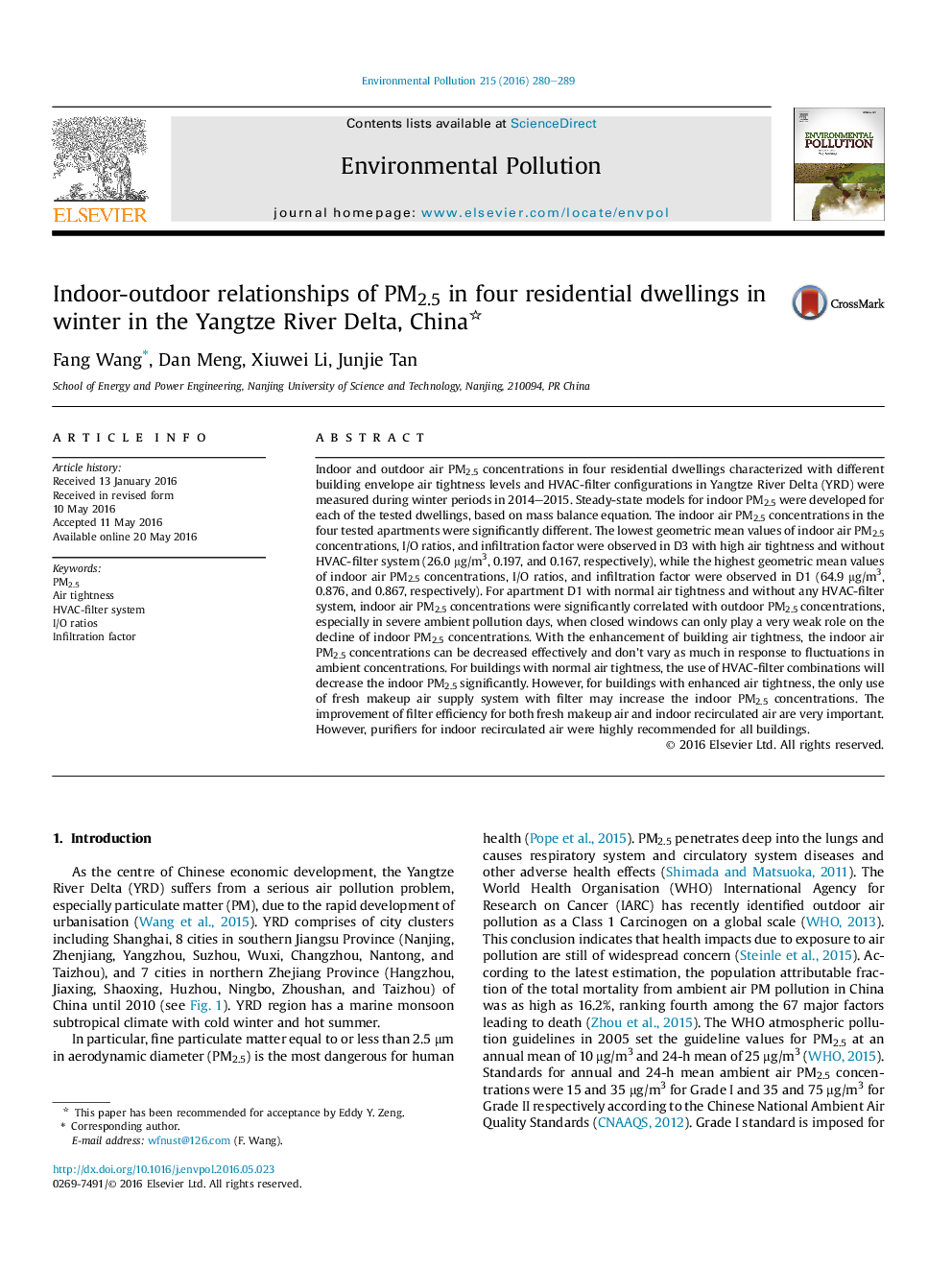| کد مقاله | کد نشریه | سال انتشار | مقاله انگلیسی | نسخه تمام متن |
|---|---|---|---|---|
| 6316099 | 1619158 | 2016 | 10 صفحه PDF | دانلود رایگان |

- Ambient air PM2.5 pollution in the YRD was very serious in winter.
- Evident between-dwelling variability in indoor air PM2.5 in the YRD was revealed.
- Enhanced building air tightness decreased the infiltration factor effectively.
- Filters for indoor return air and organised makeup air were highly recommended.
Indoor and outdoor air PM2.5 concentrations in four residential dwellings characterized with different building envelope air tightness levels and HVAC-filter configurations in Yangtze River Delta (YRD) were measured during winter periods in 2014-2015. Steady-state models for indoor PM2.5 were developed for each of the tested dwellings, based on mass balance equation. The indoor air PM2.5 concentrations in the four tested apartments were significantly different. The lowest geometric mean values of indoor air PM2.5 concentrations, I/O ratios, and infiltration factor were observed in D3 with high air tightness and without HVAC-filter system (26.0 μg/m3, 0.197, and 0.167, respectively), while the highest geometric mean values of indoor air PM2.5 concentrations, I/O ratios, and infiltration factor were observed in D1 (64.9 μg/m3, 0.876, and 0.867, respectively). For apartment D1 with normal air tightness and without any HVAC-filter system, indoor air PM2.5 concentrations were significantly correlated with outdoor PM2.5 concentrations, especially in severe ambient pollution days, when closed windows can only play a very weak role on the decline of indoor PM2.5 concentrations. With the enhancement of building air tightness, the indoor air PM2.5 concentrations can be decreased effectively and don't vary as much in response to fluctuations in ambient concentrations. For buildings with normal air tightness, the use of HVAC-filter combinations will decrease the indoor PM2.5 significantly. However, for buildings with enhanced air tightness, the only use of fresh makeup air supply system with filter may increase the indoor PM2.5 concentrations. The improvement of filter efficiency for both fresh makeup air and indoor recirculated air are very important. However, purifiers for indoor recirculated air were highly recommended for all buildings.
Journal: Environmental Pollution - Volume 215, August 2016, Pages 280-289